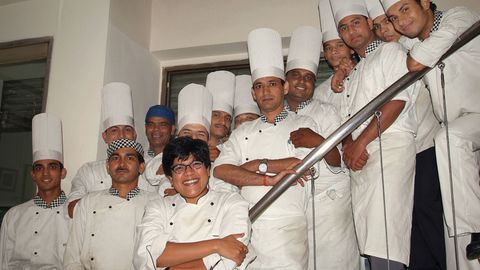
As Diva completes 25 years, chef Ritu Dalmia reflects on finding a calling that she wasn’t planning on. What she made of it is, well, right in front of us. Dalmia takes us through her vision, perspective, the power of local flavours and the changing face of dining.
Excerpts From The Interview With Ritu Dalmia
T+L India: You started your career by cooking in Italy, where you learnt local cuisine—what about it attracted you to a point where you made it your calling?
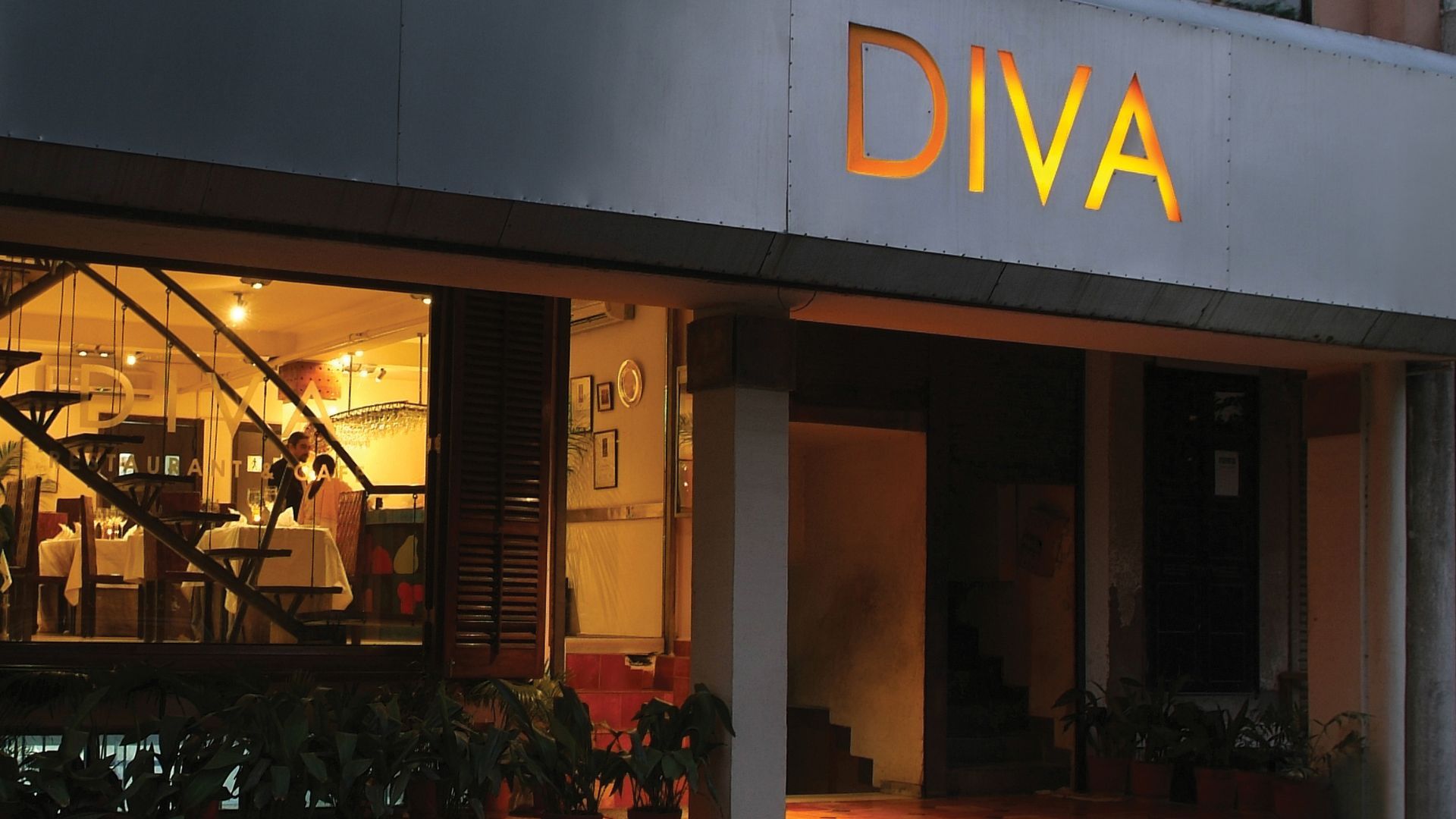 (Photo Credit: Diva)
(Photo Credit: Diva)
Ritu Dalmia: If I am honest, my biggest inspiration of how to cook Italian food was not in Italy—it came from a restaurant called River Cafe in London by chefs Ruth Rogers and Rose Gray. In 1998, I saw them using the woodfire oven not only for pizzas, but for cooking meats, vegetables, and fish—like our tandoor, right? In fact when Diva opened, I always had the River Café book on display, because it inspired me.
Someone asked me what I think about these 25 years and if you would have asked me 25 years ago about my chosen career path, would it be this? Honestly, I don’t know. What I have always loved about Italy from my first time there to this moment is the similarity of its culture with that of India, be it the love for food, love for family, the generosity, the sense of hospitality. With the food, what I noticed was what we thought of Italian food, such as cheese, pasta, and pizza, was not even 10 per cent of what the cuisine offers. The way the vegetables were cooked, how flavours were so important, how the local ingredients were so important was what made me fall in love with it.
T+L India: Diva also opened at a time in India when, as you rightly pointed out, our understanding of the Italian cuisine was very limited. Over the last decade, India’s dining culture has gone through a revolution too. How has Diva continued to evolve?
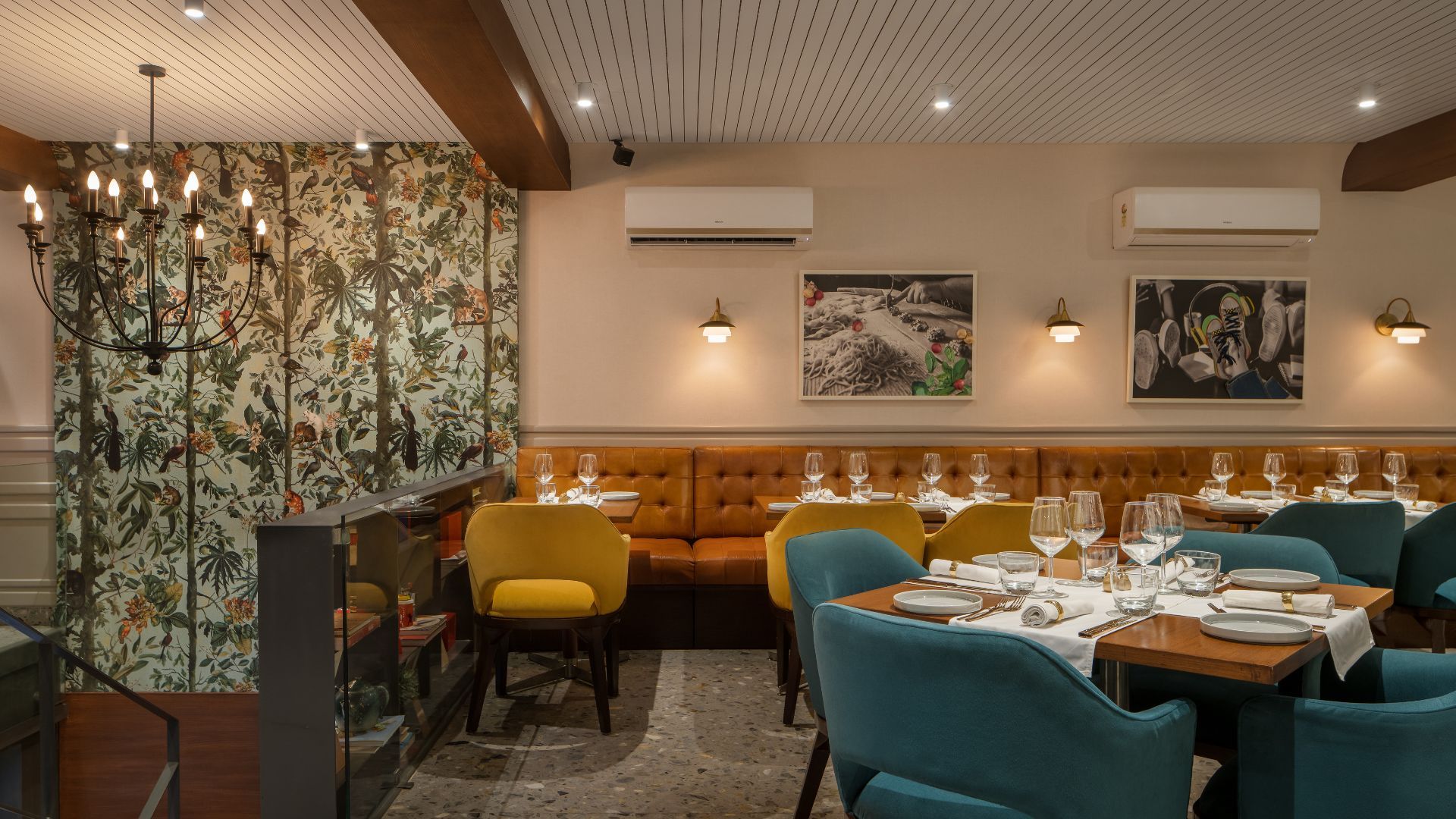 (Photo Credit: Diva)
(Photo Credit: Diva)
Ritu Dalmia: I’m not good at imbibing what’s going on or noticing the buzz. But what I can tell you is that the first few menus of Diva were way beyond its time. Some of it was accepted, some of it wasn’t. Over the years, I just didn’t bastardise the food. I used ingredients that were probably intimidating then, but now they are not. So, we’ve come a full circle.
India is changing and becoming bolder with food. During Diva’s first few menus, handmade pasta was not popular here, and it didn’t work because guests couldn’t understand why the price was higher. And now if I look at our menus, its 95 per cent fresh pastas. I remember in 2001-2002, when we first imported truffles, no one would eat truffles. And we all know what truffles have become in menus today.
T+L India: As someone who brought the Italian cuisine to India and then also took Indian food to Europe, what does it take to bring attention to cuisines in unfamiliar territories?
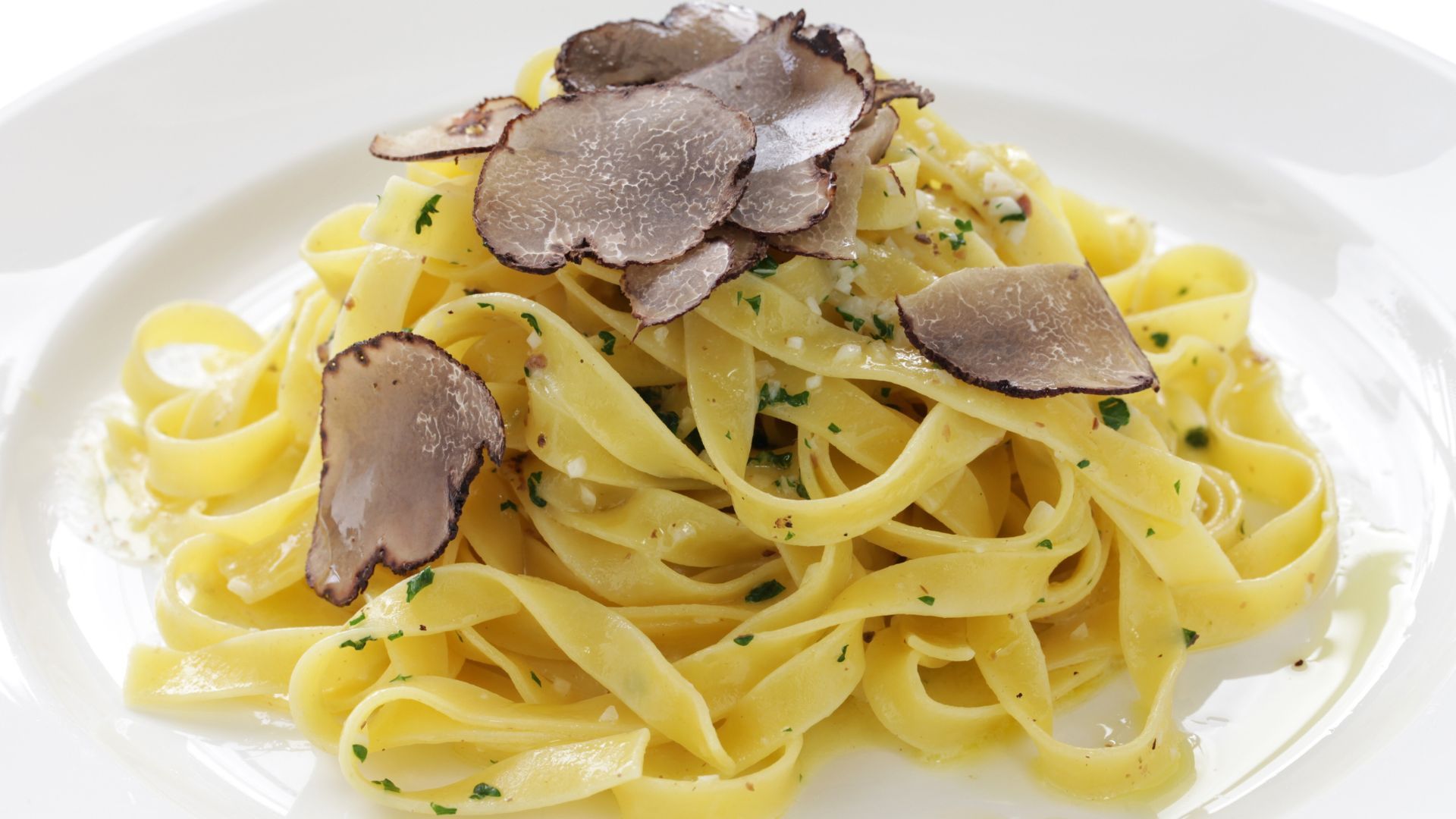 (Photo Credit: Diva)
(Photo Credit: Diva)
Ritu Dalmia: Cittamani in Milan, for me, was a big risk. Everyone told me go back to opening in London or New York, why Milan? But for me, it was a connection. Like I said, Italians are very similar to Indians—at the end of the day they need their comfort food, their ghar ka khana. I brought Italian food to India, so if I was to take my Indian food anywhere, the first place for me would be Milan. It wasn’t easy, because the locals there were so used to the regular low quality cheap Indian food, with the food colouring. But then there were also people who had been to India and now they found a restaurant that gave them food that they had eaten with friends in India. Whether it’s in Milan, whether it’s in Dubai, I like to do regional community home meals with Indian food that you wouldn’t regularly find in restaurants. It took time, but it worked, because in a way, a cuisine is a medium of teaching someone about your culture.
T+L India: What are destinations that have inspired your creativity in the kitchen the most?
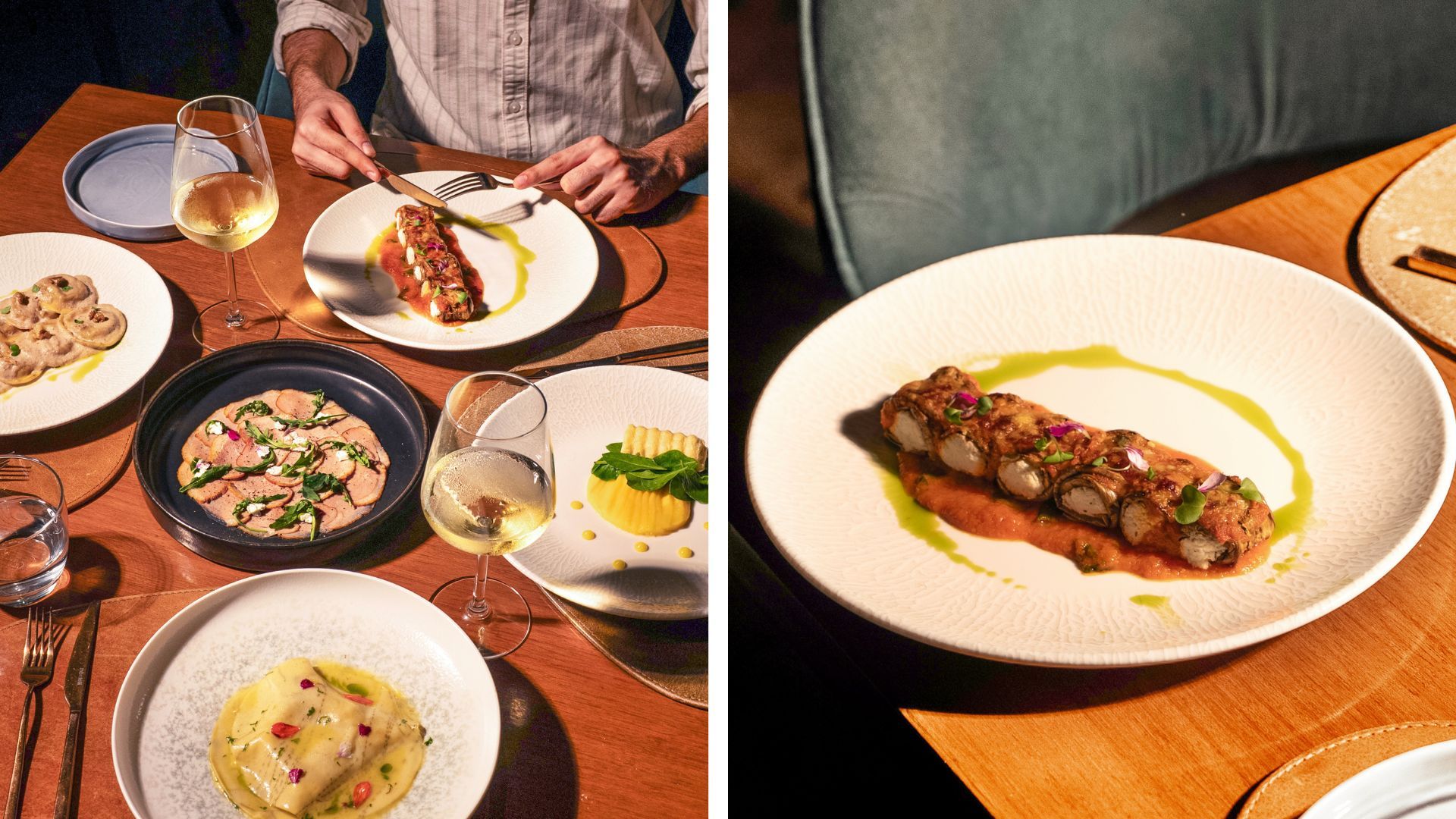 (Photo Credit: Diva)
(Photo Credit: Diva)
Ritu Dalmia: That’s such a difficult question [laughs]. It depends on my mood, the timing, etc. When I turned 35, I thought I needed to teach myself something new, so I went through this phase where I was learning all about Southeast Asian food through my travels. It was four years of continuous travels in Indonesia, Laos, Cambodia, Singapore, Thailand, again and again. The result was a restaurant called Diva Spiced, which was our Asian restaurant. Then I turned 40 and I decided to look inwards—at Indian food—which always scared me, because I think it is the most complicated cooking in the world. For the next few years I was travelling into small towns, small villages in India, eating at homes, going through my mother’s old cookbooks, and whatever I could find. The result was Cittamani, followed by Atarangi.
T+L India: You have partnered with multiple chefs over time, and you have done a lot of collaborations. How does that inspire your creativity?
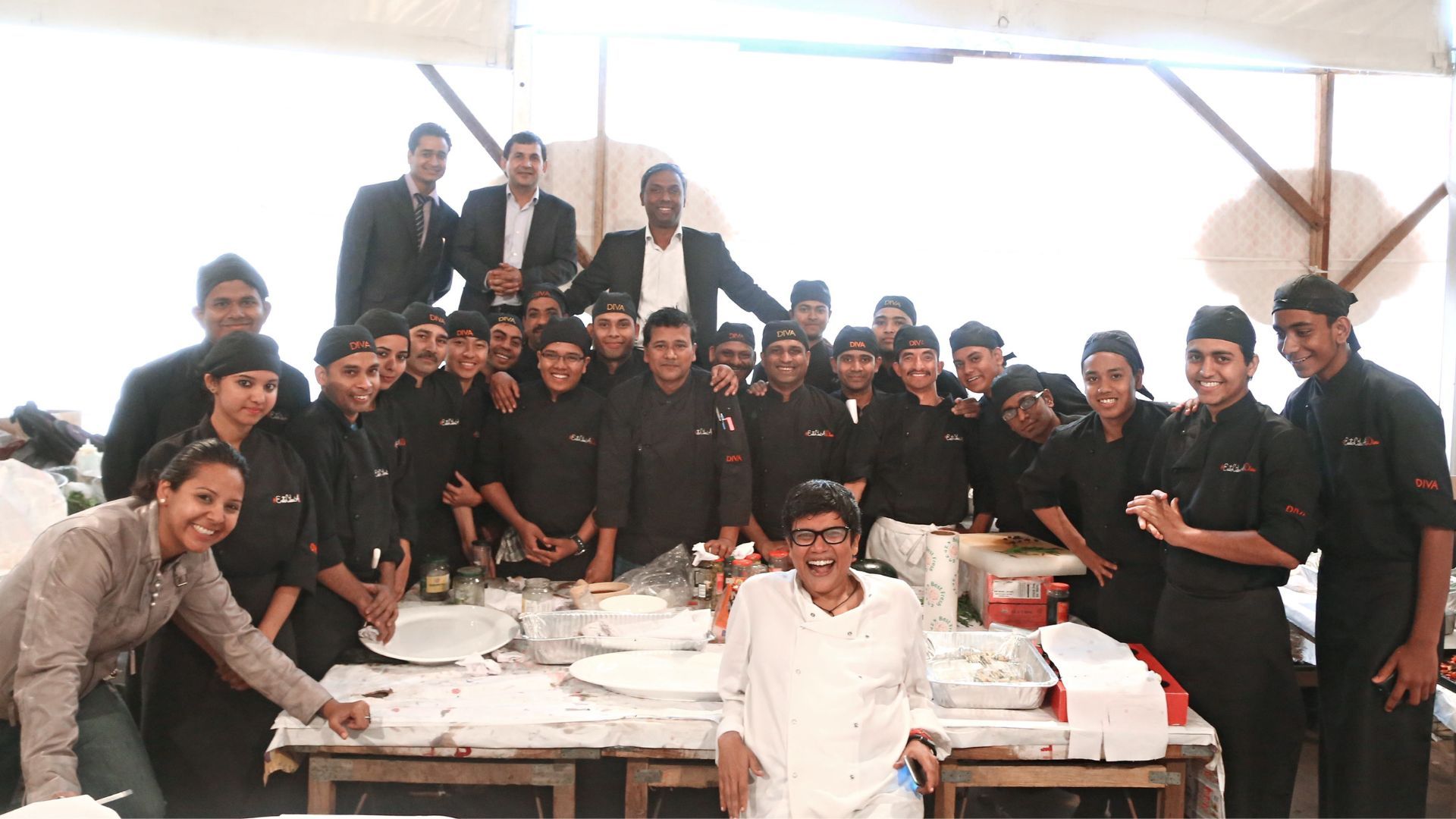 (Photo Credit: Diva)
(Photo Credit: Diva)
Ritu Dalmia: I always tell everyone I am a good chef. Am I a brilliant chef? When you are willing to learn from others, it’s a game changer. My biggest plus point is that there’s no place in my life for ego, and it has been a beautiful journey collaborating with so many chefs—from dhabas to grandmothers in Sicily—and it’s all a part of my journey.
Related: Chef Farman Ali Cooks In The Kitchen Of Memory, And Plates History And Heritage In Every Bite
Note:
The information in this article is accurate as of the date of publication.
The views expressed in this interview are solely those of the interviewee and do not reflect the opinions of the publication.
Written By
Samreen Tungekar

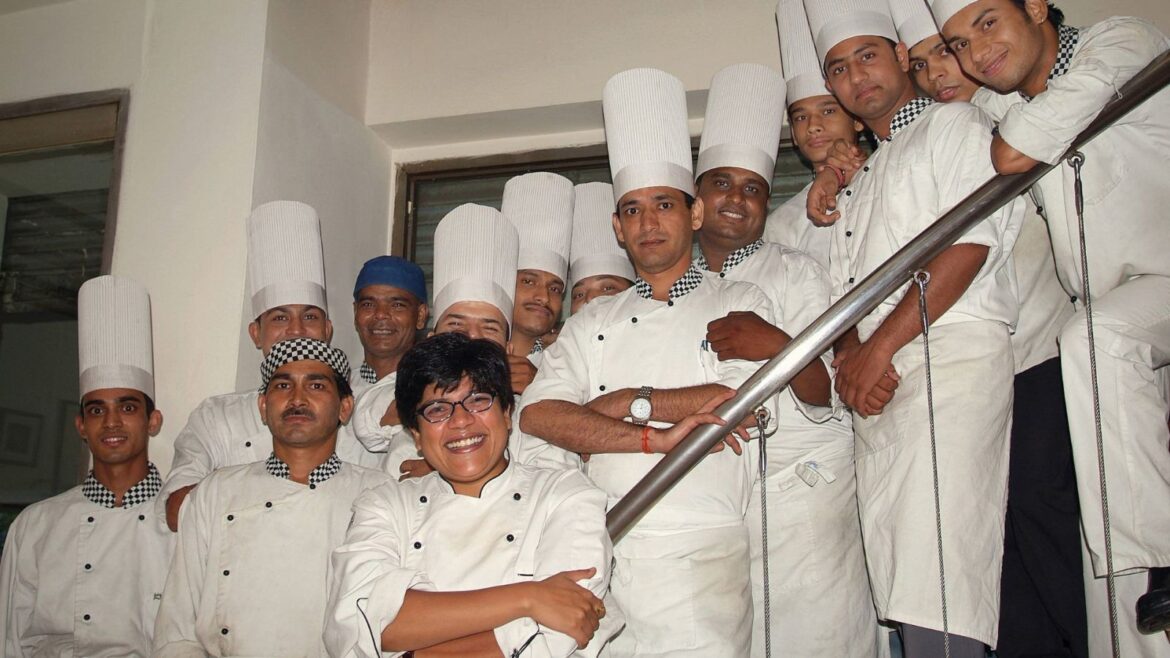
Dining and Cooking